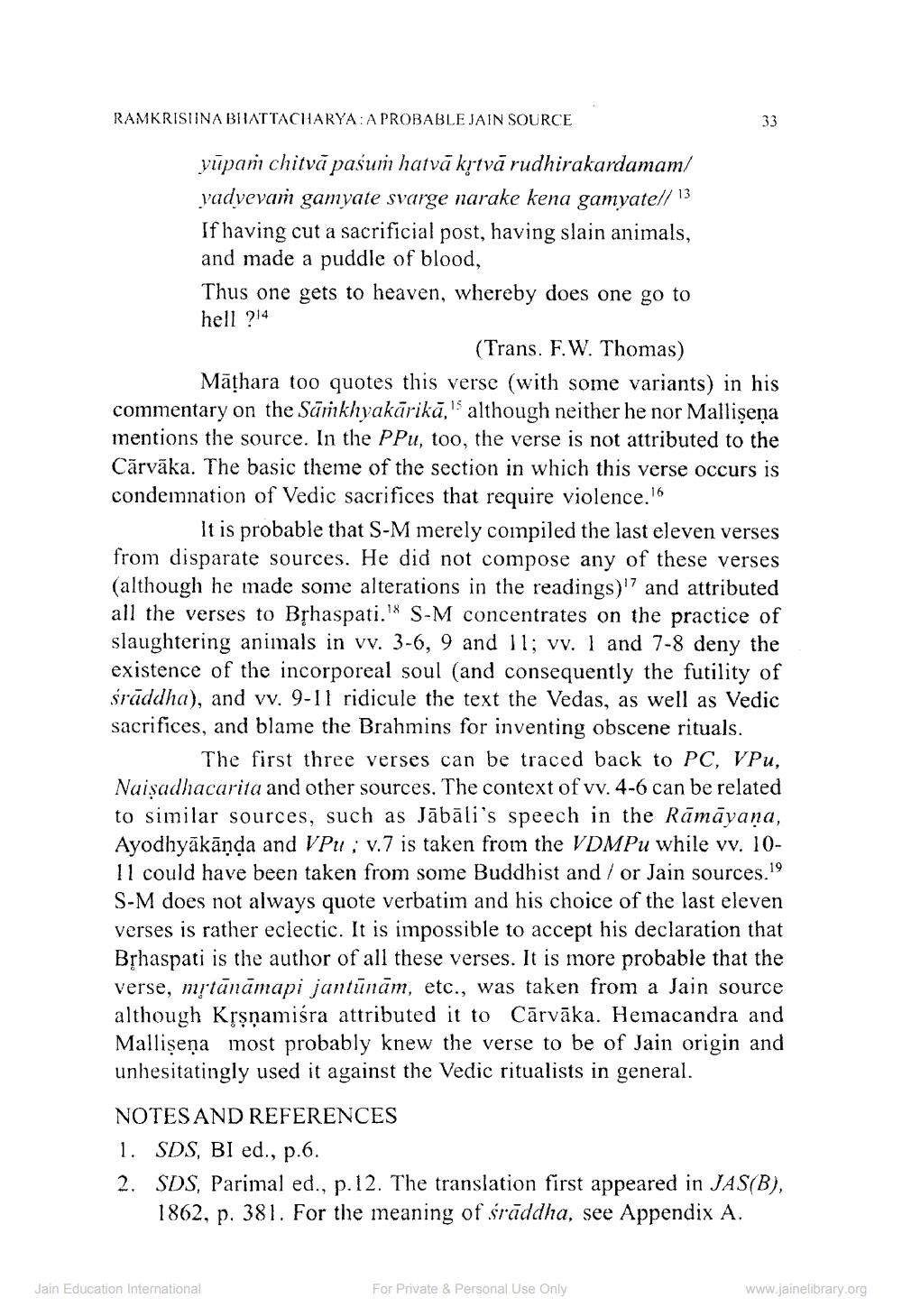________________
RAMKRISTINA BHATTACHARYA: A PROBABLE JAIN SOURCE
yūpam chitvā pašum hatvā kytvā rudhirakardamam/ yadyevai gamyate svarge narake kena gamyatel/ 13 If having cut a sacrificial post, having slain animals, and made a puddle of blood, Thus one gets to heaven, whereby does one go to hell ?14
(Trans. F.W. Thomas) Māthara too quotes this verse (with some variants) in his commentary on the Samkhyakārikā,' although neither he nor Mallisena mentions the source. In the PPu, too, the verse is not attributed to the Cārvāka. The basic theme of the section in which this verse occurs is condemnation of Vedic sacrifices that require violence.16
It is probable that S-M merely compiled the last eleven verses from disparate sources. He did not compose any of these verses (although he made some alterations in the readings) and attributed all the verses to Brhaspati.l' S-M concentrates on the practice of slaughtering animals in vv. 3-6, 9 and 11; vv. 1 and 7-8 deny the existence of the incorporeal soul (and consequently the futility of srāddha), and vv. 9-11 ridicule the text the Vedas, as well as Vedic sacrifices, and blame the Brahmins for inventing obscene rituals.
The first three verses can be traced back to PC, VPu, Naisadhacarita and other sources. The context of vv. 4-6 can be related to similar sources, such as Jābāli's speech in the Rāmāyaṇa, Ayodhyākānda and VPU , v.7 is taken from the VDMPu while vv. 1011 could have been taken from some Buddhist and / or Jain sources.! S-M does not always quote verbatim and his choice of the last eleven verses is rather eclectic. It is impossible to accept his declaration that BỊhaspati is the author of all these verses. It is more probable that the verse, mytānāmapi jantūnām, etc., was taken from a Jain source although Krsnamiśra attributed it to Cārvāka. Hemacandra and Mallisena most probably knew the verse to be of Jain origin and unhesitatingly used it against the Vedic ritualists in general.
NOTES AND REFERENCES 1. SDS, BI ed., p.6. 2. SDS, Parimal ed., p.12. The translation first appeared in JAS(B),
1862, p. 381. For the meaning of śrāddha, see Appendix A.
Jain Education International
For Private & Personal Use Only
www.jainelibrary.org




